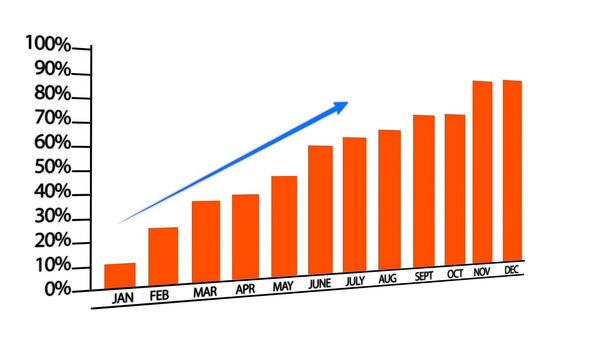
Proof-of-stake (PoS) coins have become increasingly popular among investors for providing the ability to earn “interest” in the form of new coins, additional to any potential capital gains.
In this article, we look at the top five PoS coins (measured by ROI) that you could potentially add to your portfolio in 2020.
What to Look for in PoS Coins
When considering an investment in PoS coins, you need to choose your investment carefully. Pay attention to at least the following five factors:
- ROI. You do not want your earnings dependent on an asset that is likely to go to zero with the next market downturn.
- Market capitalization and trading volume. Well established digital assets are less likely to be abandoned down the line.
- The simplicity/intricacy of the setup. Some staking setups require investors to complete time-consuming and intricate operations.
- Staking Yield. Perhaps the most obvious metric involved in staking, yield determines how much you stand to earn on your investment.
- Minimum staking requirements. In some cases, you may be required to stake close to $100,000. Such a setup is not for everyone.
Based on the above factors, the Bitcoin Market Journal team has compiled a list of five of the most attractive PoS assets.
- Dash
- NEO
- Ontology
- PIVX
- KuCoin Shares
Top PoS Coins By ROI
Dash
Dash may not be a purebred PoS coin, but it allows for staking by operating a masternode. Dash is also a high market cap asset with respectable trading volumes. As such, it is one of the most established coins on this list.
Looking at a three-year time horizon, DASH’s ROI has been impressive. DASH rode the 2017 bull market and weathered the ensuing bear market in 2018 relatively well. From a price of $11 in September 2016, it is currently trading at $89. That translates to a three-year ROI of 709 percent.
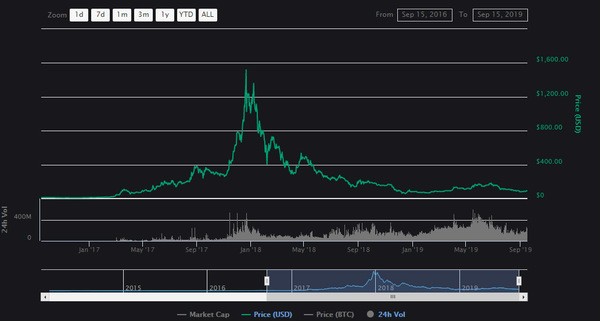
Its one-year ROI is predictably worse. From a price of $191 last September, it shed some $102, to reach its current price of $89. That is a one-year ROI of -53.4 percent.
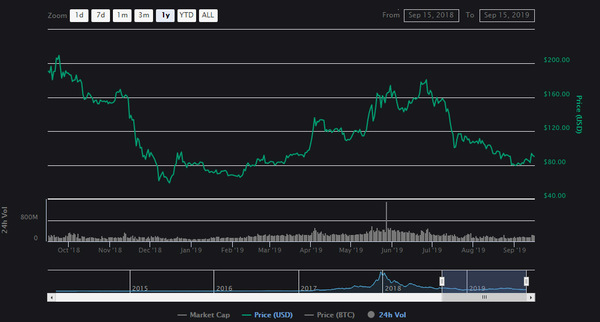
The YTD picture, on the other hand, looks more promising. From $79 at the beginning of the year, Dash has added some $10 to its value, which translates into an ROI of 12.6 percent year-to-date.
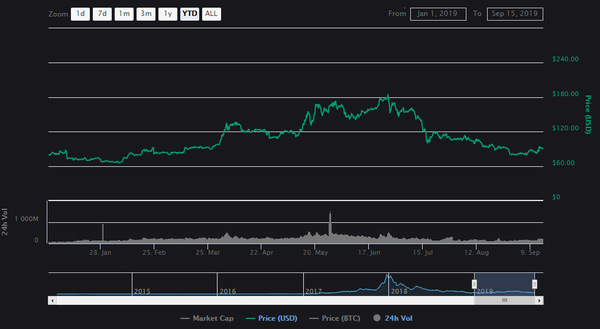
The advantages of Dash staking:
- The monthly yield offered by Dash is 0.53 percent, adding up for a yearly total of 6.36 percent.
- If you invest the minimum required 1,000 Dash, you might earn some $5.6k per year, based on current prices.
- The 1,000 DASH you invest goes into a masternode. You will not forfeit this sum or risk it in any way.
The drawbacks:
- Setting up a masternode is a cumbersome and intricate undertaking.
- You cannot “stake” less than 1,000 DASH, as that is the required minimum for a masternode.
- 1,000 DASH at current prices is worth more than $89,000, so DASH “staking” is a pricey venture.
NEO
Another high market cap/trading volume coin that can be staked for additional income is NEO (NEO).
Chinese born and bred, NEO does not shine in the staking yield department. To reap healthy rewards with this asset, you will need to stake quite a bit of it.
NEO staking is based on the GAS reward token. Stakers can store GAS in their NEO wallets. It bears pointing out that the NEO staking reward has nosedived over the past year. The yearly yield is now at the 1.52 percent mark.
ROI-wise, NEO has been following the altcoin patterns. Its long-term ROI looks more than OK. From a price of $0.32 in September 2016, it is now trading at $9.15. That is a staggering three-year ROI of 2,759 percent.
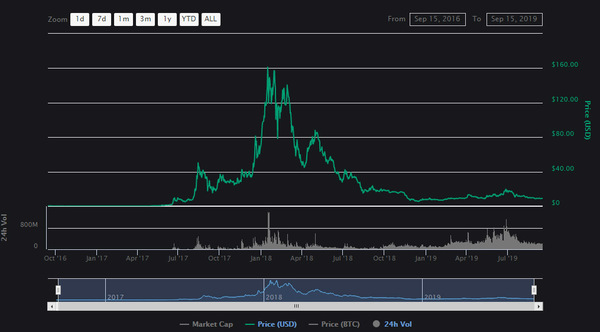
The 1-year ROI picture is much direr. Last September, NEO was trading around $18, hitting $19 at one point. It has since shed around $10 of its value. That one-year -49.1 percent ROI does not taint the long term performance picture of the digital asset though.
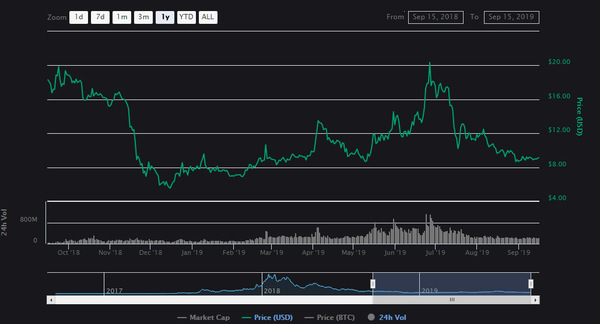
The YTD outlook is slightly more bullish. From $7 at the beginning of January, the coin is now worth more than $9, having generated a year-to-date ROI of 30.7 percent.
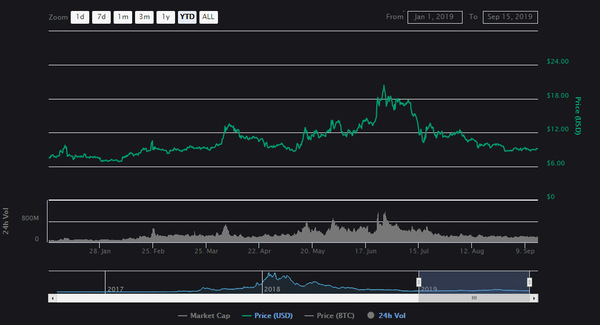
NEO staking advantages:
- Easy setup and maintenance.
- GAS wallet does not need to stay open at all times during staking.
- The minimum staking requirement is just NEO 1.
Drawbacks:
- The staking yield is quite meager. If you stake the minimum required amount of 1 NEO, you might earn some $0.14 in a year. Multiplying both sides of that equation by 1,000, would still only land you $140.
Ontology
Ontology is an open-source, two-token smart contracts and dApps platform. In addition to the ONT token, the platform also uses ONG (Ontology Gas). Staking rewards are delivered in ONG.
The minimum required amount for staking is just 1 ONT. Investors will need 500 ONT as collateral for staking authorization. To run a node, a minimum of 200,000 ONT is required.
ROI-wise, ONT went against the grain of the ailing crypto markets in 2018. Having been first listed in March 2018, at a value of $2.62, it reached a little over $10 before dropping back down. It is now worth some $0.76, for a lifetime ROI of -71 percent.
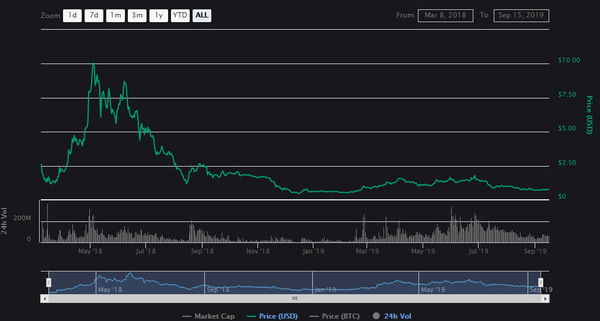
Under such circumstances, ONT’s one-year ROI is negative as well. Precisely a year ago, it was worth some $1.85. ONT’s one-year ROI comes to -59 percent.
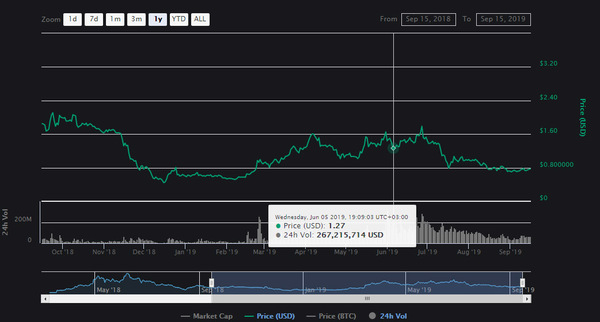
Year-to-date, however, the asset has registered a slight rebound, from $0.59. This might be a sign of a turn-around. The YTD 28.8 percent gain is in line with better performing altcoins this year.
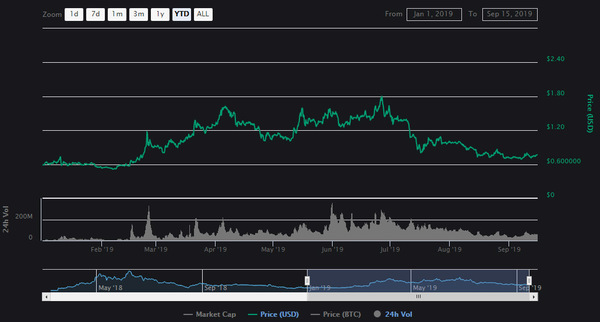
The advantages of ONT staking:
- With a 500 ONT minimum collateral, staking can be an attractive proposition for new investors.
- The yearly staking yield of ONT is 3.08 percent. It is not the best, but it is still attractive enough.
The drawbacks:
- The staking setup is intricate and requires some tech-specific knowledge.
- If you invest 500 ONT right now, in a year, you may have earned $11.71, assuming a constant staking yield and price.
PIVX
PIVX (PIVX) is a privacy-focused cryptocurrency that comes with an attractive staking yield. Unlike some of the detailed staking options, however, PIVX is not a large market cap/trading volume coin.
The minimum staking amount is 100 PIVX. Those looking to run a masternode will have to provide a 10,000 PIVX collateral. At current prices, that is still affordable as well.
In regards to ROI, from a September 2016 price of $0.004, the price of PIVX is now $0.29. Interestingly, it reached its highest ever price in January 2018. One PIVX was then worth $13.22. Even with today’s modest price, PIVX’s three-year ROI is a massive 7,150 percent.
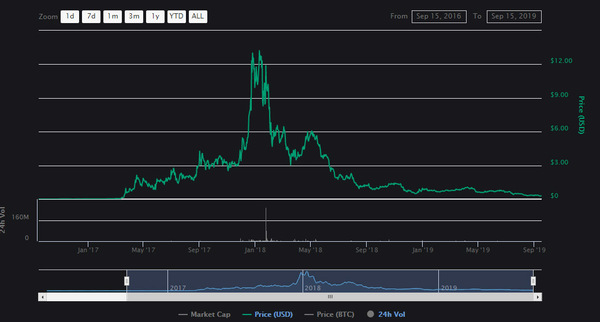
The one-year ROI paints a different picture. Last September, the price of PIVX was $0.91 and it later climbed to above $1, only to eventually drop to where it currently is. This one-year ROI of -68.1 does not look out-of-place, however, considering the presence of the bear market over the period.
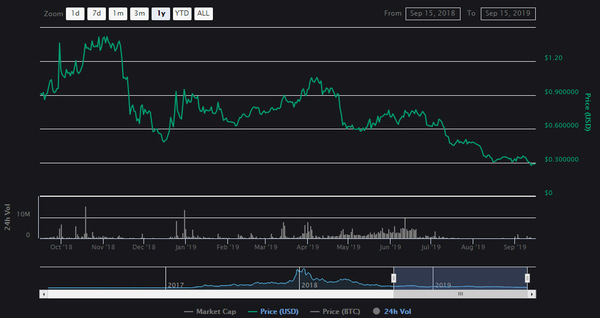
The YTD picture is equally dire. The price dropped from $0.85, feeling the full chill of the crypto winter, for a YTD ROI of -65.8 percent.
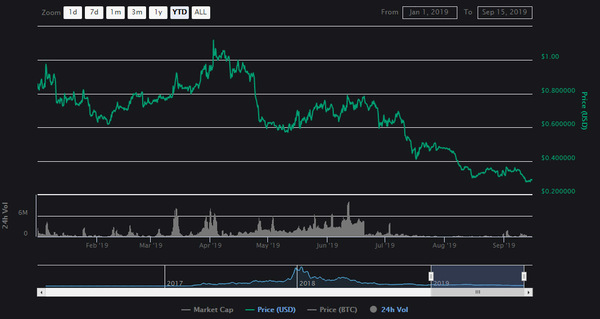
PIVX staking advantages:
- PIVX staking is as simple as setting up and unlocking a wallet.
- Staking yield has held up well against the backdrop of a falling price.
- 9.41 percent yearly staking yield. Staking PIVX 3,500 (approx. $1,000 at current prices) may earn $94.74 per year (assuming price stability).
Drawbacks:
- PIVX is one of the smaller privacy coin projects, and this is reflected in its price volatility.
KuCoin Shares
KuCoin Shares is the token of a centralized digital asset exchange. Through it, investors can potentially profit from the success of the exchange itself. They can buy and hold KuCoin Shares looking for its price to go up. They can also stake their coins and pick up dividends. The dividends originate from the trading fees.
The minimum required staking amount is 6 KCS. Staking KuCoin Shares is extremely easy. All you need to do is to buy them on the exchange and leave them there. You can use bitcoin (BTC) to buy KCS.
KCS only came online in October 2017. From a price of $0.69, it has since come to be worth some $1.74, for an increase of 152 percent. KCS’s all-time-high was reached in January 2018, at $20.33.
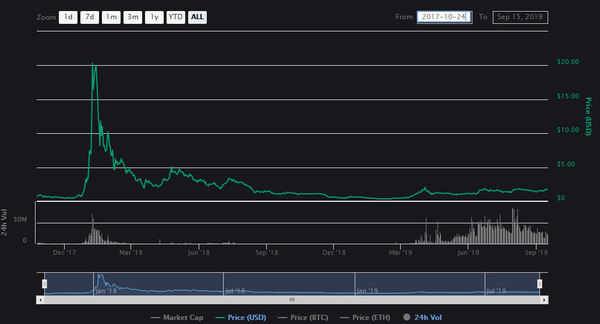
KCS is one of a handful of coins where the 1-year ROI is positive. Its price last September was $1.11. That translates to a one-year ROI of 56.7 percent.
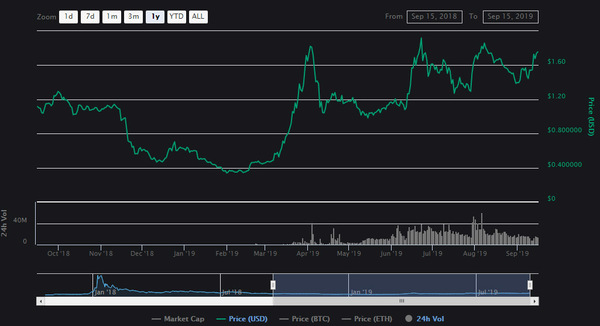
The same goes for the YTD picture. In January, one KCS was worth $0.62. The YTD ROI of 180.6 percent looks impressive.
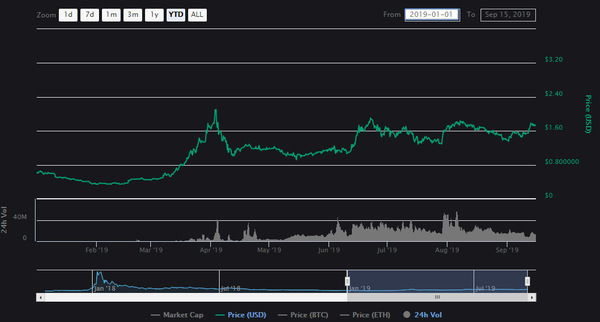
KCS staking advantages:
- At 16.93 percent, KCS’s yearly staking yield is substantial. It is one of the best options in this regard.
- Staking is as easy to set up as buying some KCS on KuCoin.
Drawbacks:
- Exchange coins may be securities, as they offer direct exposure to the performance of a company.
- The exchange-based model has been done better by others.
Related Articles:
- How to Stake Altcoins: A Quick Guide
- What Is Crypto Soft Staking and How Does It Work?
- Crypto Staking Providers, Rated and Reviewed (+ How They Work)
Join the Bitcoin Market Journal newsletter to follow the latest trends and developments in the digital asset markets.

